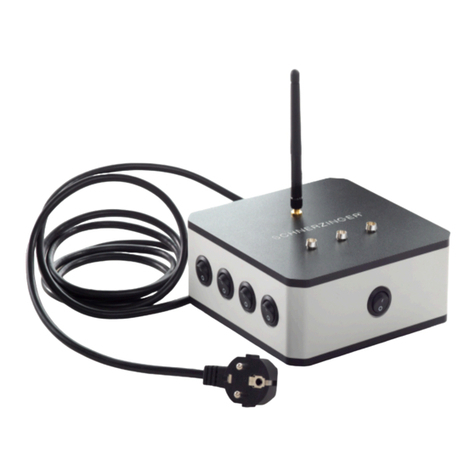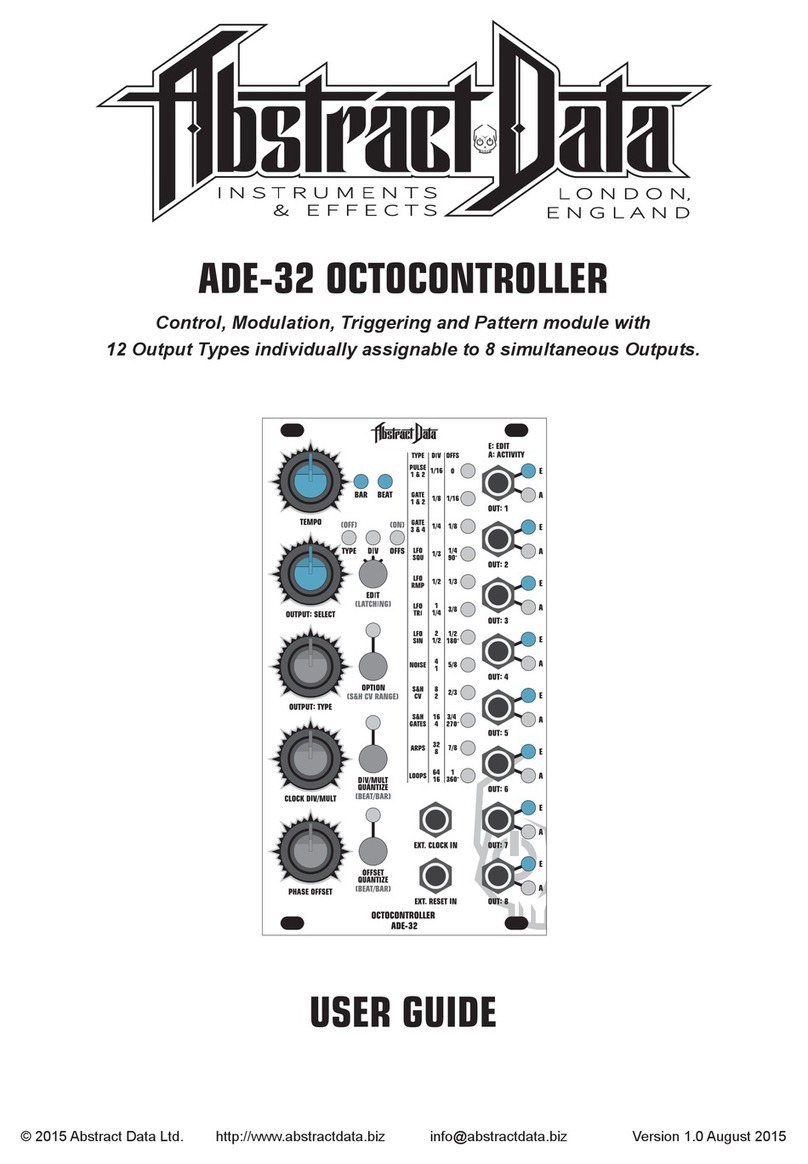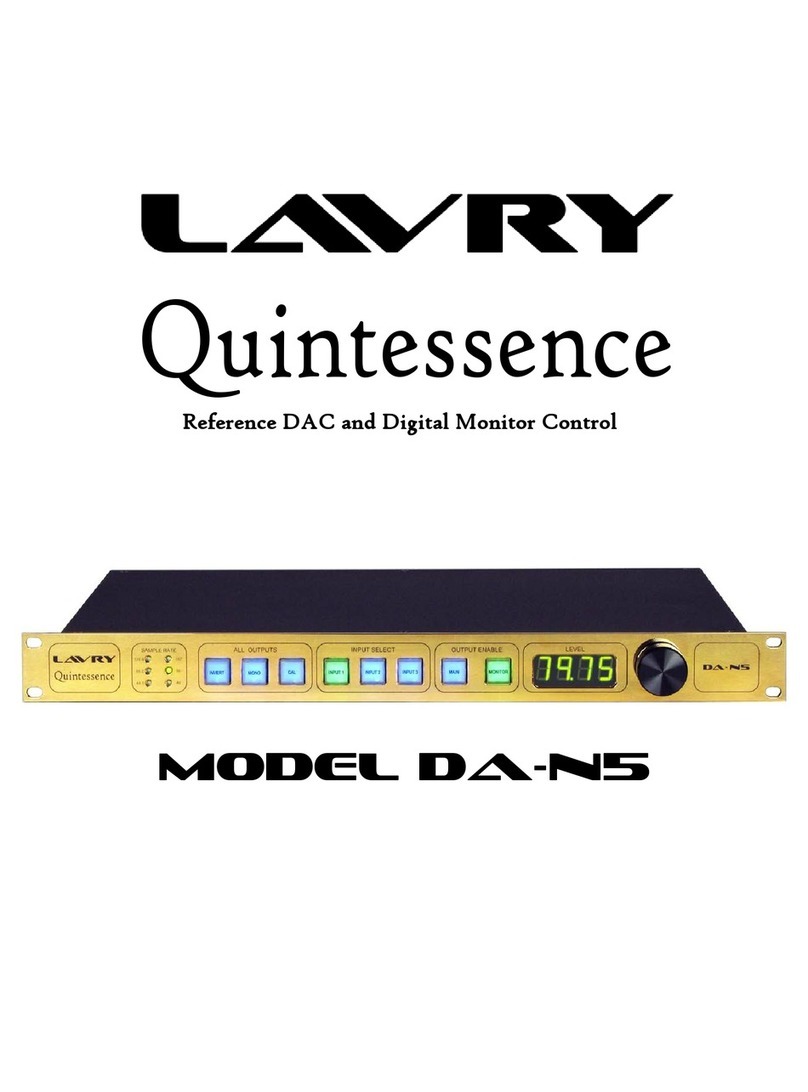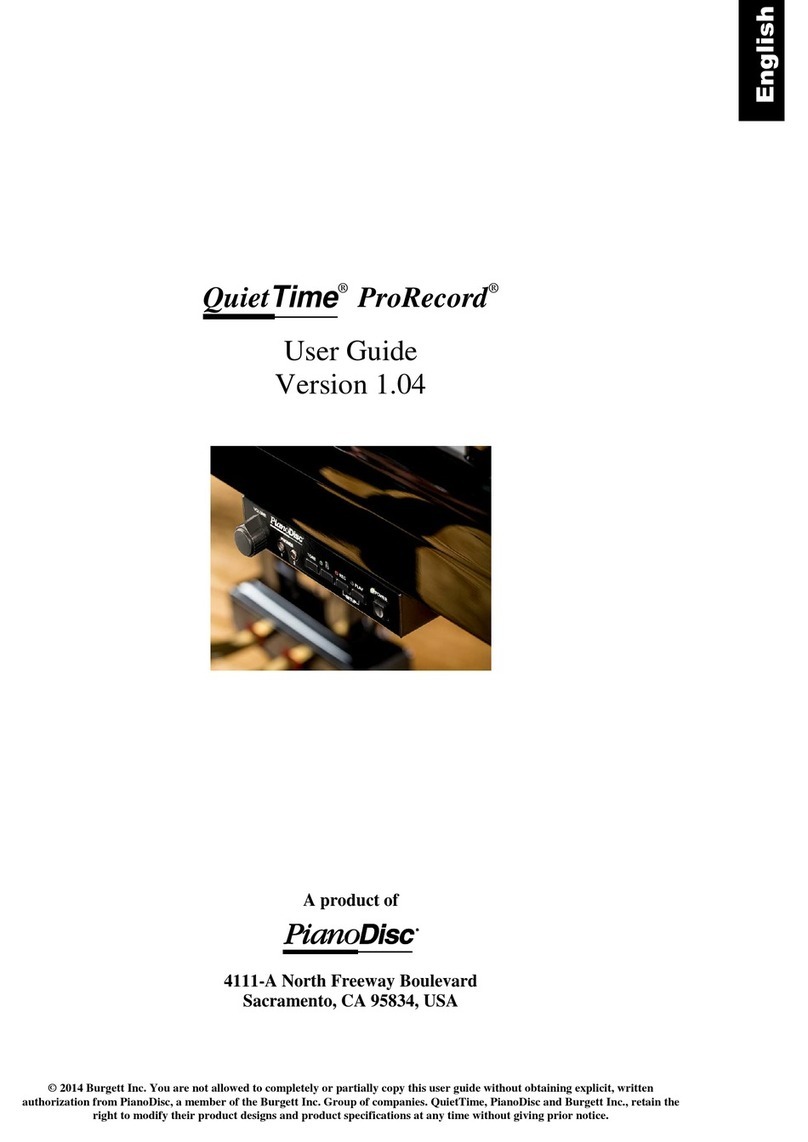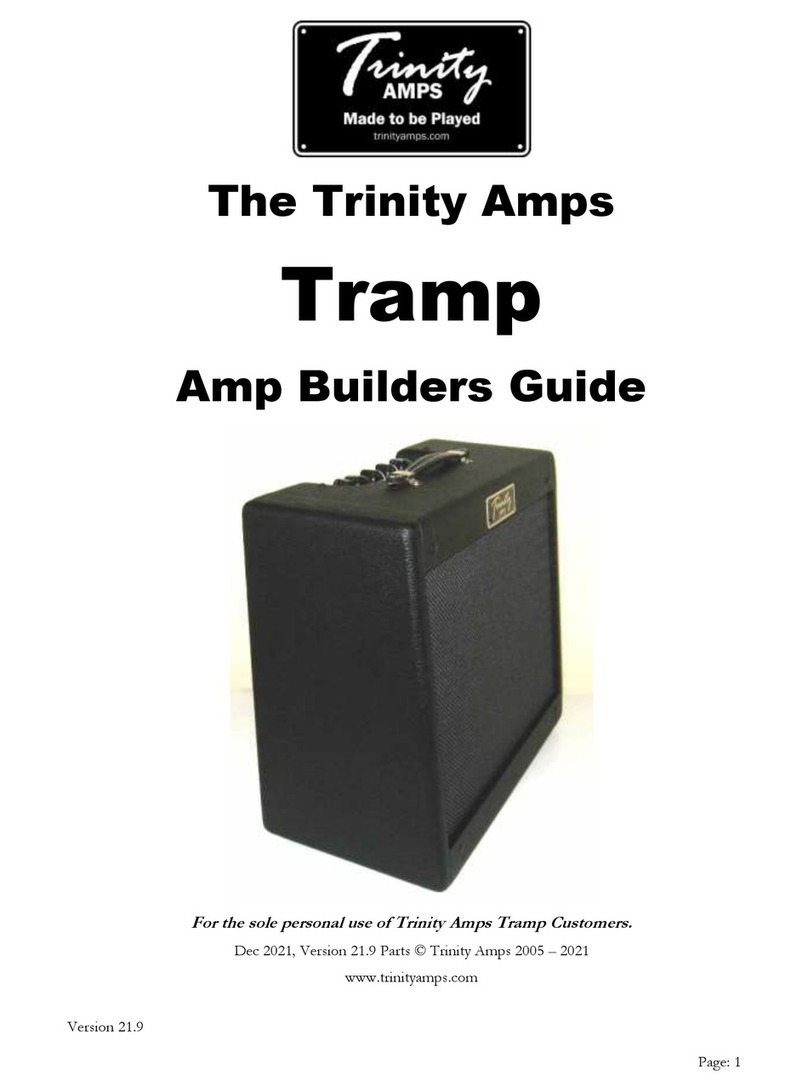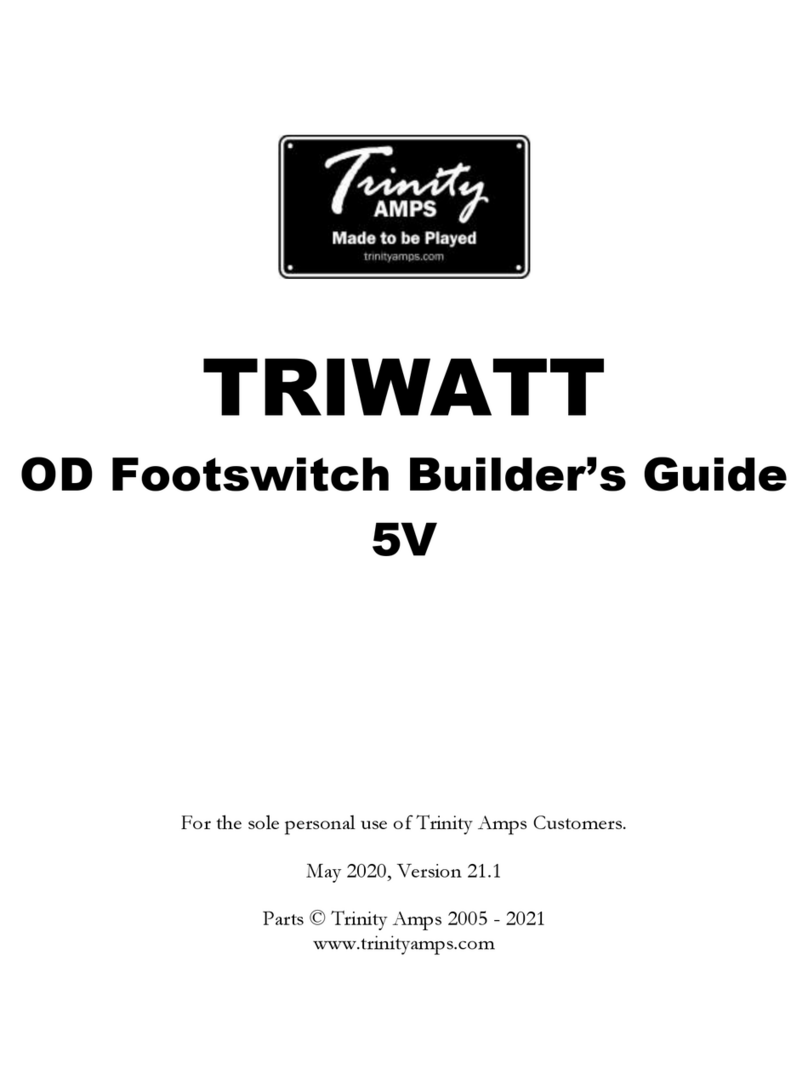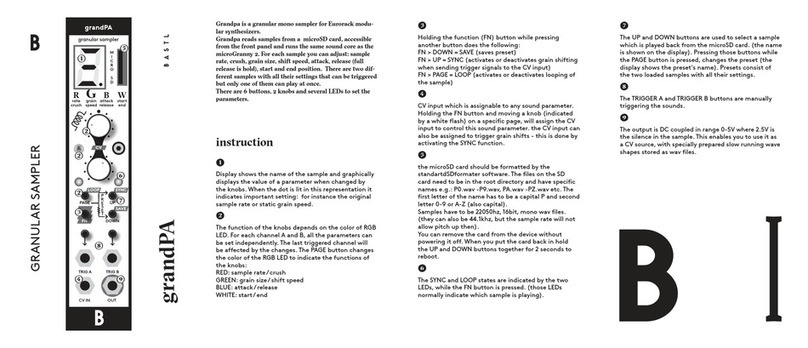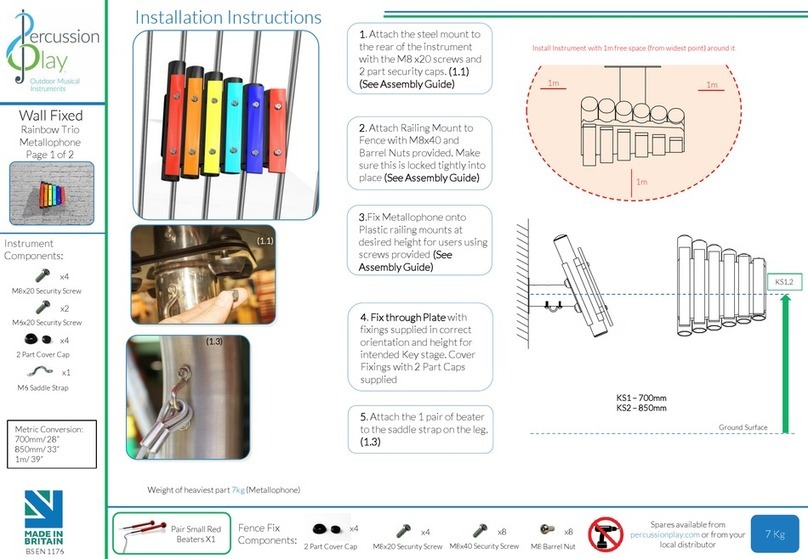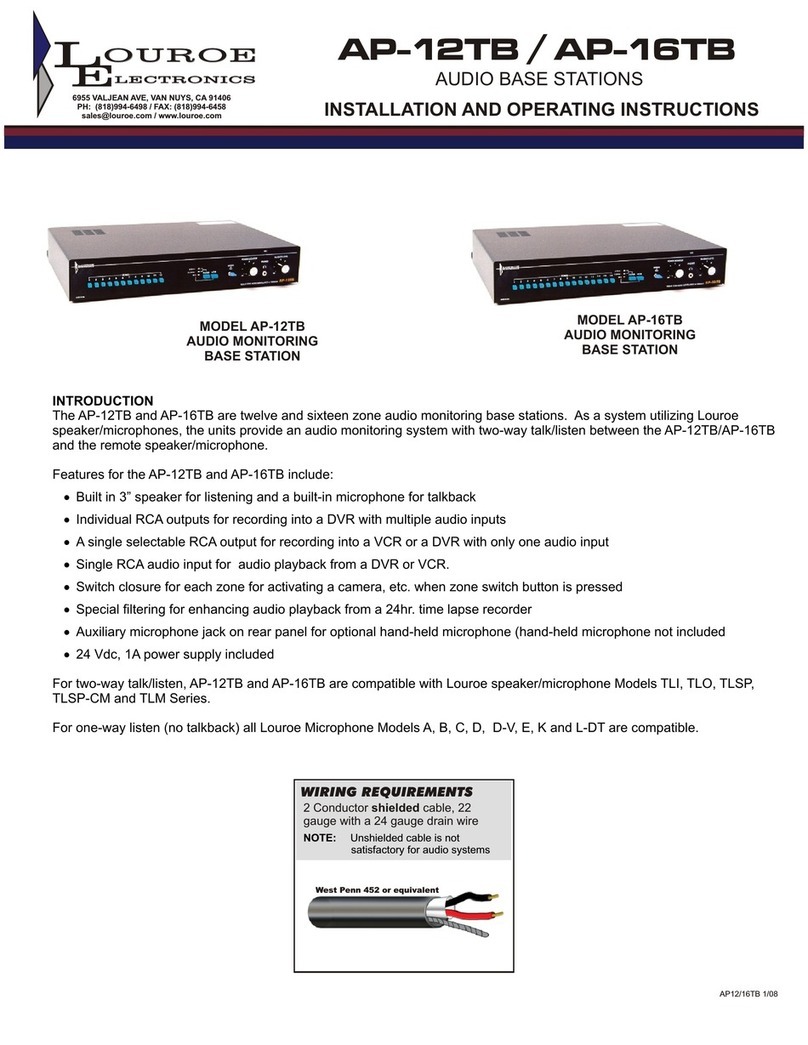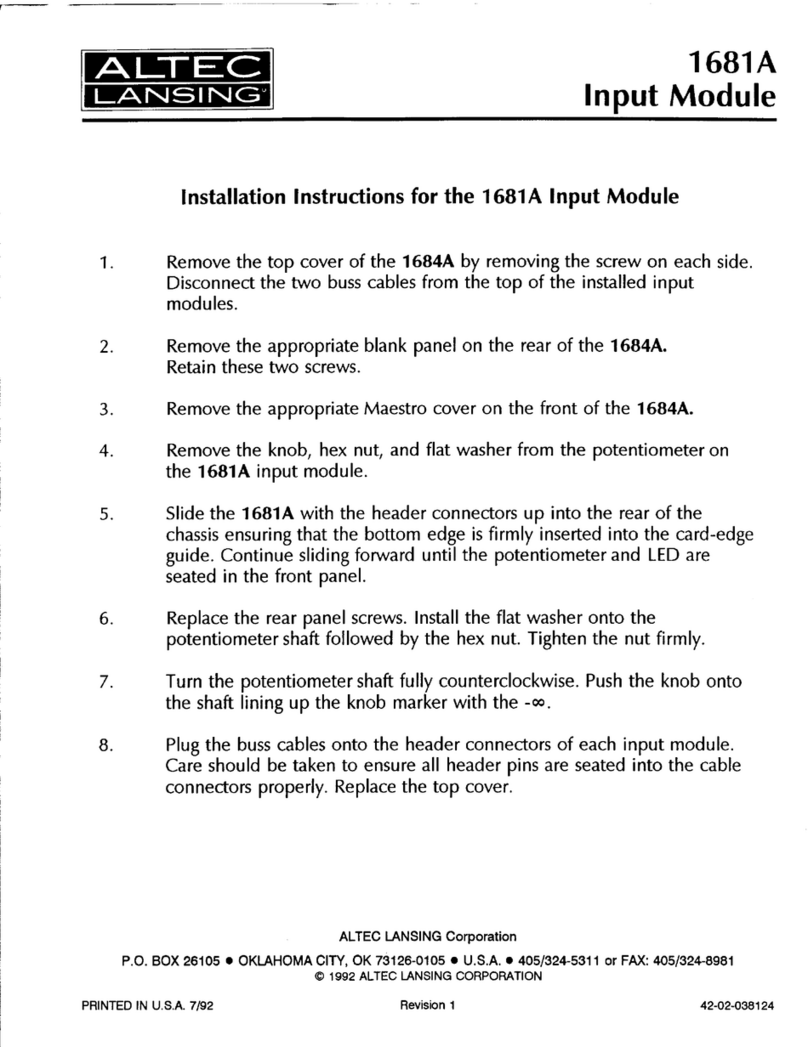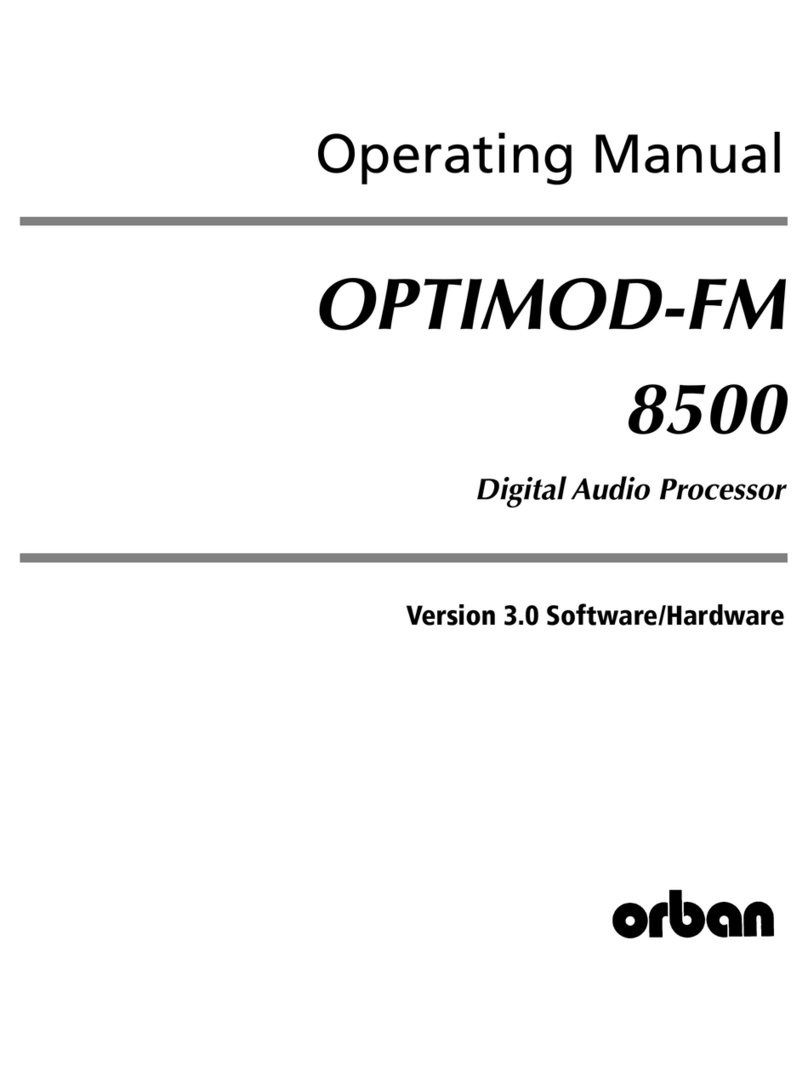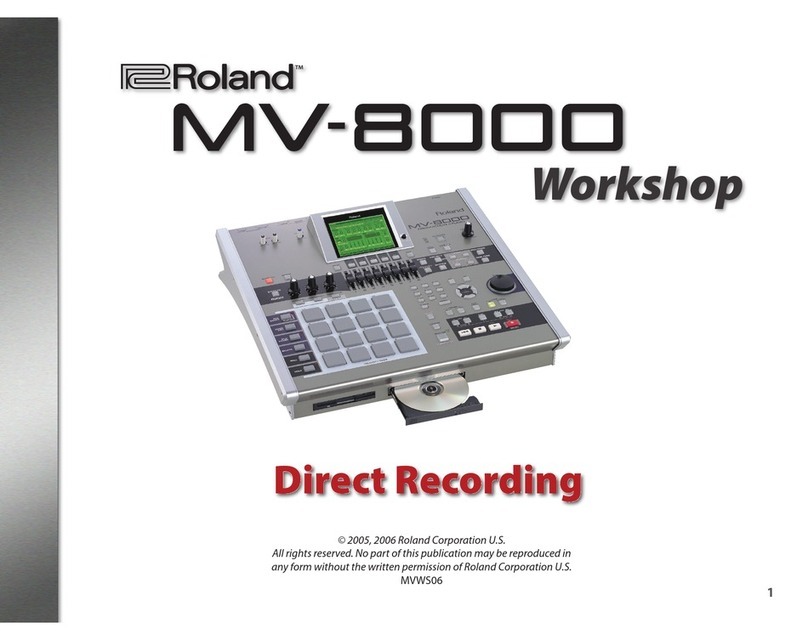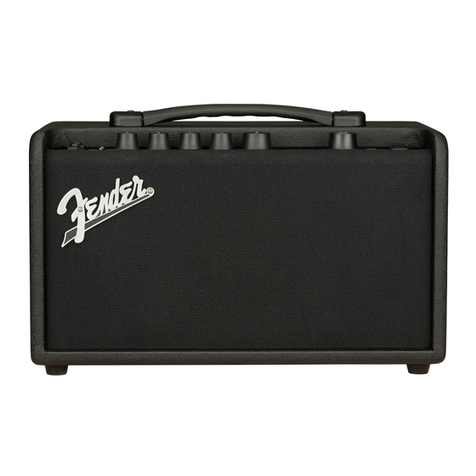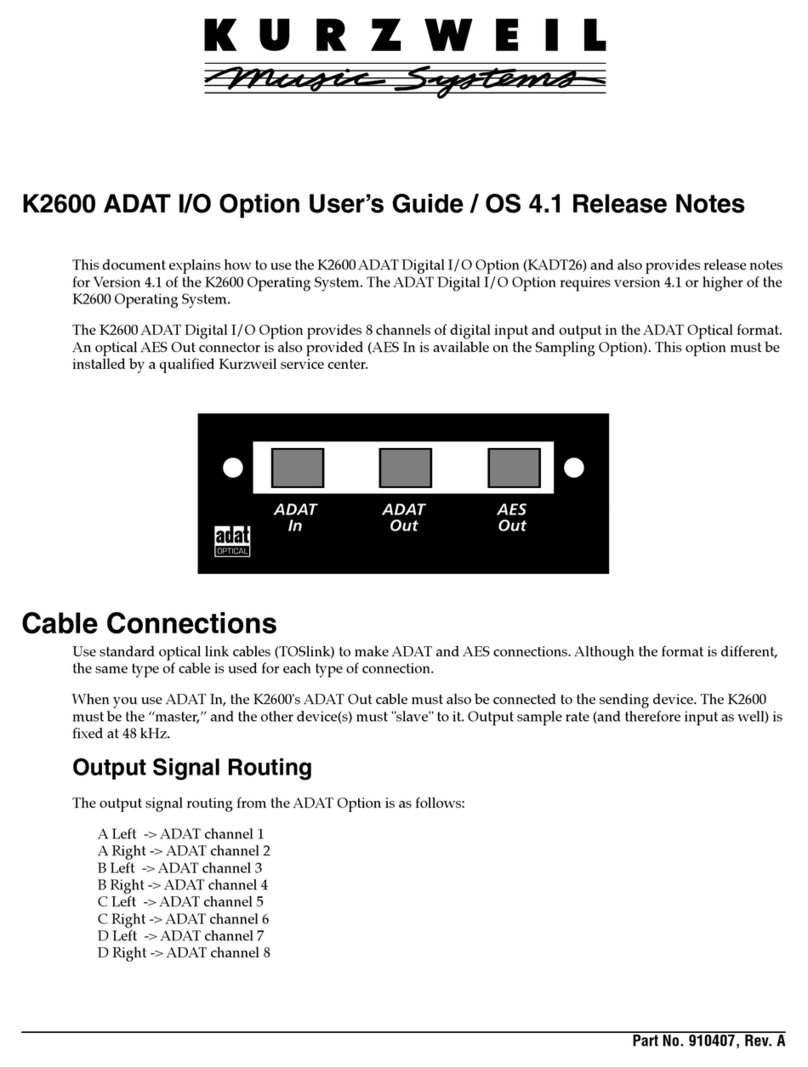Install the 0.1uf power supply capacitor. Install the 22uf power supply capacitor
Familiarize yourself with the LED. They have one flat side (cathode) and one anode, the
long lead, which is positive. The PCB pad for the anode is square and is printed onto the
PCB. These LEDs are optional but will help to test the amplifier RELAY circuitry so
they are recommended to be installed. You can also drill a hole in the front panel and
run a wire to the front panel so the relay operation is visible by looking at the amp.
Bend the leads to 90 degree at about ¼” from the LED base.
Install the cathode and anode leads into the correct holes by looking at the PCB printing.
You will see a flat side to the circle labelled LED. Solder in place.
Familiarize yourself with the RELAY. It will go into the PCB one way.
There is a NOTCH at the COIL end. Insert them into the board with the
NOTCH/COIL end towards the 510R resistor and solder them in place.
Familiarize yourself with the 2 –3000uf POWER SUPPLY FILTER
CAPACITORS. They have a positive (+) lead and must be installed
correctly. The PCB is marked with the correct orientation. Insert them into
the board and solder them in place.
Finally, familiarize yourself with the MCP1826S, 3V Linear Voltage Reg 1A.
It is a good idea to ‘ground’ your body to make sure static does not destroy
the semiconductor.
Note that it has a metal tab on one side. This faces “inwards” towards the
Bridge Rectifier. The PCB is marked with the correct orientation. Insert it into the board
and solder it in place.
INSTALLATION
1. Install the Footswitch Cliff Jack (jack MUST be insulated from Chassis)
2. Install the Footswitch Relay Board on standoffs onto the chassis
3. Twist the two 6.3VAC wires from V1 to the ‘H’ terminals on the Relay board.
4. Connect coaxial cable to the front panel; Connect coaxial cable to the front panel to V2
5. Connect wires to tubes socket (V2) footswitch jack and front panel switch, carefully following
the
TRIWATT FOOTSWITCH RELAY BOARD INSTALLATION LAYOUT
6. Test the Relay operation.
7. Test the OD operation on the working amp.
